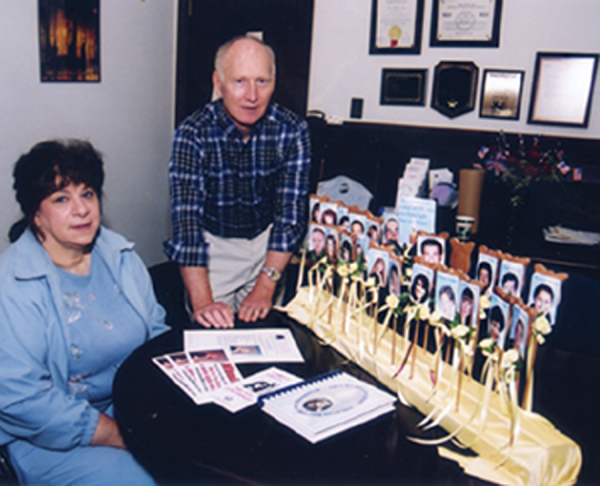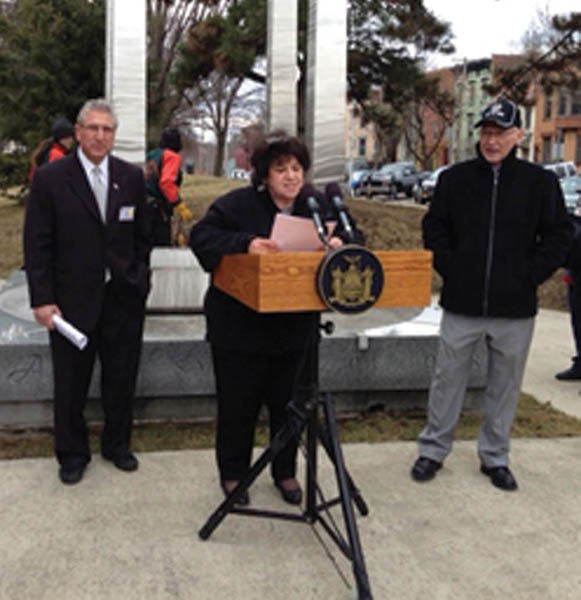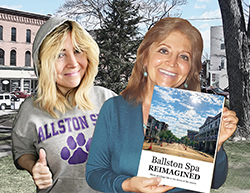The Prayer Lines Behind the Bylines
The Lyalls
Beacons of HOPE for families
of missing persons across USA
(PDF
expanded version)
 By
Ann Hauprich
By
Ann HauprichINTRODUCTION
I was in the midst of paginating the following chapter about Center for HOPE co-founders Doug and Mary Lyall in August 2015 when I received the sorrowful news that Mr. Lyall had passed away.
The first thing I did through watery eyes was to light a candle and pray that a “Highway to Heaven” kind of angel might be sent to earth to comfort Mary.
Having interviewed the Lyalls several times since their youngest child, Suzanne, vanished without a trace in 1998, I knew Mary had lost the Rock of Gilbralter soul mate who had been the wind beneath her wings for more than 50 years. The next thing I did was to put pen to paper to try to write a message of consolation in which I attempted to express my sorrow and my sympathy to Mary and her grieving family, including son Steven and daughter Sandy.
But just as there are times when tears are not enough, words were not – and still are not – enough to adequately convey my feelings of admiration and respect when it comes to The Lyalls.
Apparently legions of others feel the same. For when I visited Mary in her Ballston Spa, NY home on October 10, 2015, I discovered the message I had sent was but one of hundreds of sympathy cards and thousands of on-line condolences she and her loved ones had received since Doug’s untimely August 26th passing.
 Among the most poignant was one from NYS Assemblyman Jim Tedisco – who had been
with The Lyalls every step of the way since their then 19-year-old Suzanne’s
suspected abduction from her SUNY/Albany campus. A copy of Mr. Tedisco’s moving
tribute can be found elsewhere in this chapter.
Among the most poignant was one from NYS Assemblyman Jim Tedisco – who had been
with The Lyalls every step of the way since their then 19-year-old Suzanne’s
suspected abduction from her SUNY/Albany campus. A copy of Mr. Tedisco’s moving
tribute can be found elsewhere in this chapter. Also added to the original chapter, which I’d begun writing a couple of years ago, are some precious photos from Lyall family albums. Detailed captions help to tell the story of life before – and in the aftermath of – Suzanne’s mysterious disappearance. Perhaps sharing these images will spark a memory that could lead to the solving of Suzanne’s nearly 20-year-old Cold Case.
The image I’ve chosen to use to close this chapter with was taken by me of Mary upon our arrival at a playground in the Town of Milton, NY, which had been recently been dedicated in honor of Suzanne.
Earlier in the day, I’d gotten goose bumps as EARTH ANGEL played on my radio as I was nearing the Lyall homestead. When I asked Mary whether that song from the 1960s had ever been meaningful to her and Doug, she acknowledged that it had.
And so I wasn’t at all surprised when a short time later as we were reminiscing about Doug’s life and legacy on the glorious three-season back deck where he had spent many of his final hours that Mary shared something else that I believe to be a heaven-sent message.
Mary was baffled because her caller ID revealed she’d received a call from a Douglas Lyall at 1:42 p.m. the previous day while out on Center for HOPE business. This was something that I agreed absolutely could NOT be. And yet, I found myself asking Mary: “Do the numbers 142 mean anything special to you? Or did they ever hold any special meaning for Doug that you know of?” My heart skipped a beat when Mary responded: “Well … now that you mention it, I suppose 142 could be interpreted as Doug’s birthday since he was born in January 1942.”
Please keep all of the above in mind when you gaze upon the photograph at the conclusion of this chapter -- the one in which Mary is standing at the entrance to Suzanne’s Playground holding a portrait of Doug. ( Click here for PDF of this story to view photo.)
The day Suzanne Lyall
vanished without a trace
(PDF expanded version)
The following story detailing the day Suzanne Lyall disappeared and a companion piece honoring Center for HOPE co-founders Doug and Mary Lyall were originally written by Ann Hauprich at the dawn of 2013. Portions of the story about the transformation of the Lyalls from powerless victims to powerful advocates were updated following Doug Lyall’s untimely passing in August 2015.
An uplifting phone call from daughter Suzanne was the icing on Mary Lyall’s birthday cake on the evening of Sunday, March 1, 1998.
“Suzy had been studying hard for her college midterms and was a little on the broke side, but other than that, she was pretty upbeat,” recalled Mary. When offered some bridge financing to tide her over until she came home at the start of Spring Break that Thursday, Suzy graciously declined.
“Suzy told me she had a paycheck coming from her part-time job at Babbage’s at Crossgates Mall and was sure she could stretch the last of her funds a few more days. She was looking forward to her father (Doug) and me coming to pick her up from college in Albany on Thursday and how we’d celebrate my birthday then.”
Suzy’s birthday was also nearing. The youngest of the three Lyall children was to turn 20 years old on April 6 so if anything her parents expected their home to be filled with added light and laughter as signs of life renewing itself sprang forth all around their idyllic Ballston Spa, NY neighborhood.
Fast forward 36 hours from the joyous March 1, 1998 phone call and the scene in the Lyall home is one of unimaginable angst as Suzy’s parents struggle to process the news that their daughter never returned to her college dorm room the night before.
In fact, they were soon to learn, their 19-year-old had seemingly disappeared into thin air after stepping off of the CDTA bus that had transported her from her Crossgates Mall job to her SUNY/Albany campus at around 9:45 p.m. on Monday, March 2, 1998.
That meant 12 hours had passed since Suzy, who by all accounts was conscientious, responsible and predictable, vanished without a trace.
In March 2013 – 15 long years and endless agonizing days and nights later — the wound that punctured and shattered the hearts of Suzy’s parents after her father answered his phone at around 10 a.m. on Tuesday, March 3, 1998 remained open and the long awaited pay check from Babbage’s was still uncashed.
“Time does not heal in such cases,” explained Doug. “You eventually carry on and do your best to rebuild your lives, but the suffering never truly ends as long as a loved one is missing. The loss of our daughter, the not knowing what happened to Suzy, is with us each and every day.”
The call that Doug said “changed our lives forever” came from Suzy’s boyfriend who said he had grown concerned after being unable to contact her via phone or Internet the previous night. “Our reaction was one of shock and disbelief, leaving us confused and unable to think clearly. We were numb. We knew our daughter well and we were positive she had not run away.”
Although the terrifying thought that brought Suzy parents their knees was that Suzy had been abducted, they wanted to first rule out every other possible explanation. “We were battling the logical and the emotional,” explained Doug. “On the one hand we thought: maybe she fell. Maybe she had a seizure. Maybe she’s on the campus grounds injured or sick. Maybe someone will find her unconscious and call for medical help. Anything but what in hindsight we instinctively knew in our hearts to be true.”
As excruciating hours stretched into days riding on an emotional roller coaster from which there was no escape, Suzy’s parents began to accept the unthinkable: that harm had surely come to the daughter they had spent so much of their lives nurturing and protecting. “How could this happen?” the couple asked over and over. “We thought missing young people were those who took undue risks by using street drugs or hitchhiking – not a wholesome, responsible young lady like our daughter. How wrong we were! We were not prepared for this catastrophic event. How could we be?”
Although the Lyalls secured the assistance of the campus police department as well as local and state police after reporting Suzy missing, the couple insists valuable time was forever lost between around 10 p.m. March 2 and 10 a.m. March 3, 1998. “A state college campus is a busy place with lots of people coming and going at all hours. It’s possible someone who was passing through SUNY/Albany that night witnessed something, but didn’t put two and two together because they moved on before Suzy’s disappearance was broadcast by the media. It’s also possible critical evidence was removed from the path between the bus stop and Suzy’s dorm – or even from her dorm room. We’ll never know.”
That Suzy’s failure to return to her dormitory was not reported until 12 hours later was bad enough; subsequent campus procedural confusion compounded her parents’ anxiety and frustration. Even now it’s hard not for them not to feel regret that every second that passed without action after Suzy failed to return to her dorm that night 15 years ago was a second when witnesses and evidence may well be lost.
Upon finally being admitted to their daughter’s room on March 4, the Lyalls saw that Suzy’s computer was still on and that her blow dryer was still on the bed – both clear signs to them that Suzy had planned to return there after getting off the bus following work two nights earlier.
Please scroll down to learn about The Center for HOPE.
Why families of missing
across nation turn to
The Center for HOPE
(PDF expanded version)
The following tribute to Center for HOPE co-founders Doug and Mary Lyall and the companion piece about the day Suzy vanished were originally written by Ann Hauprich at the dawn of 2013. Portions of the story about the transformation of the Lyalls from powerless victims to powerful advocates were updated following Doug Lyall’s untimely passing in August 2015.
Suzanne Gloria Lyall was a conscientious 19-year-old college sophomore with long blonde hair and sparkling blue eyes when she vanished without a trace after stepping off a CDTA bus near her SUNY/Albany dormitory at around 9:45 p.m. on March 2, 1998.
During a January 2013 interview, parents Mary and Doug Lyall shared heartbreaking recollections of the day they learned Suzy was missing (please see next section of this chapter) and how they have struggled each and every day since then to cope and rebuild their shattered lives.
Still searching for clues three years ago as the calendar – and their grieving hearts – were preparing to mark the 15th anniversary of their daughter’s mysterious disappearance, the Lyalls said they drew comfort and strength from helping the loved ones of other missing persons.
Indeed it was out of the ashes of their anguish and grief that the couple laid the foundation for The Center for HOPE (Healing Our Painful Emotions) in Ballston Spa, NY, which has earned a national reputation as a beacon and a life raft for those struggling to cope with the unexplained disappearance of a loved one.
Advocacy, education and prevention are cornerstones of the not-for-profit as well as of an annual event initiated by the Lyalls that enables friends and relatives of the more than 4,000 missing persons throughout New York State to join together to reflect, remember and provide mutual support. NYS Missing Persons Day takes place each year on or near Suzy’s April 6 birthday at the New York State Museum in Albany.
“Until our daughter vanished, Mary and I never gave much thought to tragedies like this,” reflected Mr. Lyall, a retired mental health professional, who was enjoying a leisurely cup of coffee while reading his morning newspaper the day the phone in his home rang with news that his daughter had failed to return to her dorm the night before. The emotional roller coaster ride that followed was so traumatic that in hindsight the Lyalls marvel that they survived the initial steep climbs and plunges, hairpin twists and turns and sudden dead end stops.
According to the Lyalls, those whose loved ones have vanished typically experience intense emotions ranging from shock and disbelief to sorrow and grief to frustration and anger before finally coming to the gut-wrenching realization that this is not some nightmare from which they will awaken if pinched. At this point, the most devastating emotion of all – despair – often enters the scenario.
“There was no place we could turn for the kind of guidance and support we needed when we got that life transforming call 15 years ago,” explained Mr. Lyall. That lack of critical resources at a critical time would ultimately become the spark that ignited the flame that led to the founding of The Center for HOPE and its outreach programs. “Suzanne’s disappearance opened our eyes to the plight of others coping with similar tragedies and has brought us together so that we might help one another. A day never passes we don’t think about and miss our daughter,” Mr. Lyall had stated.
“For me and Doug and our older children (Steven and Sandra) there is no closure and never will be,” reflected Mrs. Lyall. “The best we can ever hope for is a resolve … a resolution. Even if Suzanne came back tomorrow and was able to celebrate her 35th birthday with us this April 6, it wouldn’t erase the 15 years she has been missing. You can never get back lost time with a loved one.” (EDITOR’S NOTE: As this book was nearing completion in July 2016, Suzanne had been missing for 18 years. She would be have been 38 on her April 6, 2016 birthday.)
The saving grace of the couple’s ordeal as of the dawn of 2013 was that they’d come to view the journey that followed Suzanne’s disappearance from a different perspective. Had this heavy cross not been placed on their shoulders, the Lyalls – who will celebrated 50 years of marriage in November 2014 — would never have met many of the “wonderful people” whose paths have passed theirs in settings ranging from airports to conferences.
In addition to the advice and support they’ve received from such well-known newsmakers as John Walsh and Ed Smart, the Lyalls often thanked God for the people who would otherwise be strangers. Instead these individuals gave the Lyalls hugs or told them their family was on a prayer list. “A small act or gesture really can make a large difference,” said Mrs. Lyall, an artist who has had little time to draw or paint since her daughter vanished.
The Lyalls expressed gratitude to the owners of the magnificently renovated Old Chocolate Factory for donating the commercial space that has been occupied by The Center for HOPE since around the turn-of-the-millennium. “We’d been operating out of our house a few miles away and were deeply moved the day Jerry DeFilippo (a father of two who is one of the historic landmark’s owners) came forward with the generous offer to give our not-for-profit a home,” said Mr. Lyall.
In addition to being the catalyst behind the proclamation that led to the establishment of the first NYS Missing Persons Day in 2001, the groundwork for many other initiatives have been laid behind the center’s doors.
It was here the Lyalls and the organization’s Board of Directors, with support from citizens, community leaders and elected representatives, worked together to help bring about the NYS Campus Safety Act, the Missing Persons Alert System through the NYS Thruway, Missing Persons profiles on NYS tax forms, Assault and Abduction Free School Zones and a piece of federal legislation called Suzanne’s Law. More recent accomplishments include having decks of “Cold Case” playing cards produced that are now available to inmates at the county jails throughout NYS. “We are hopeful that the cards will jog someone’s memory and lead to the arrest and conviction of the perp responsible for unsolved abductions and murders,” said Mr. Lyall.
The Center for HOPE is also committed to expanding the radKIDS program that educates youngsters and empowers them with the skills needed to help prevent them from becoming victims of predatory violence. Based on the nationally accredited radKIDS curriculum, the program includes dynamic live-action demonstrations of the skills needed to escape danger and abduction.
Through radKIDS training, children and adolescents become empowered and learn to replace the fear, confusion and panic of dangerous situations with confidence, personal safety skills and self-assurance.”
RELATED LINKS to stories about the Lyalls:
High-tech Used on Mohawk River in Search for Suzanne Lyall
Milton playground breaks down barriers; Design helps kids with disabilities
Doug and Mary Lyall sat down for an in-depth interview at The Center for HOPE in March 2013. The series of three videos below were recorded by Legacies Unlimited during that session.
